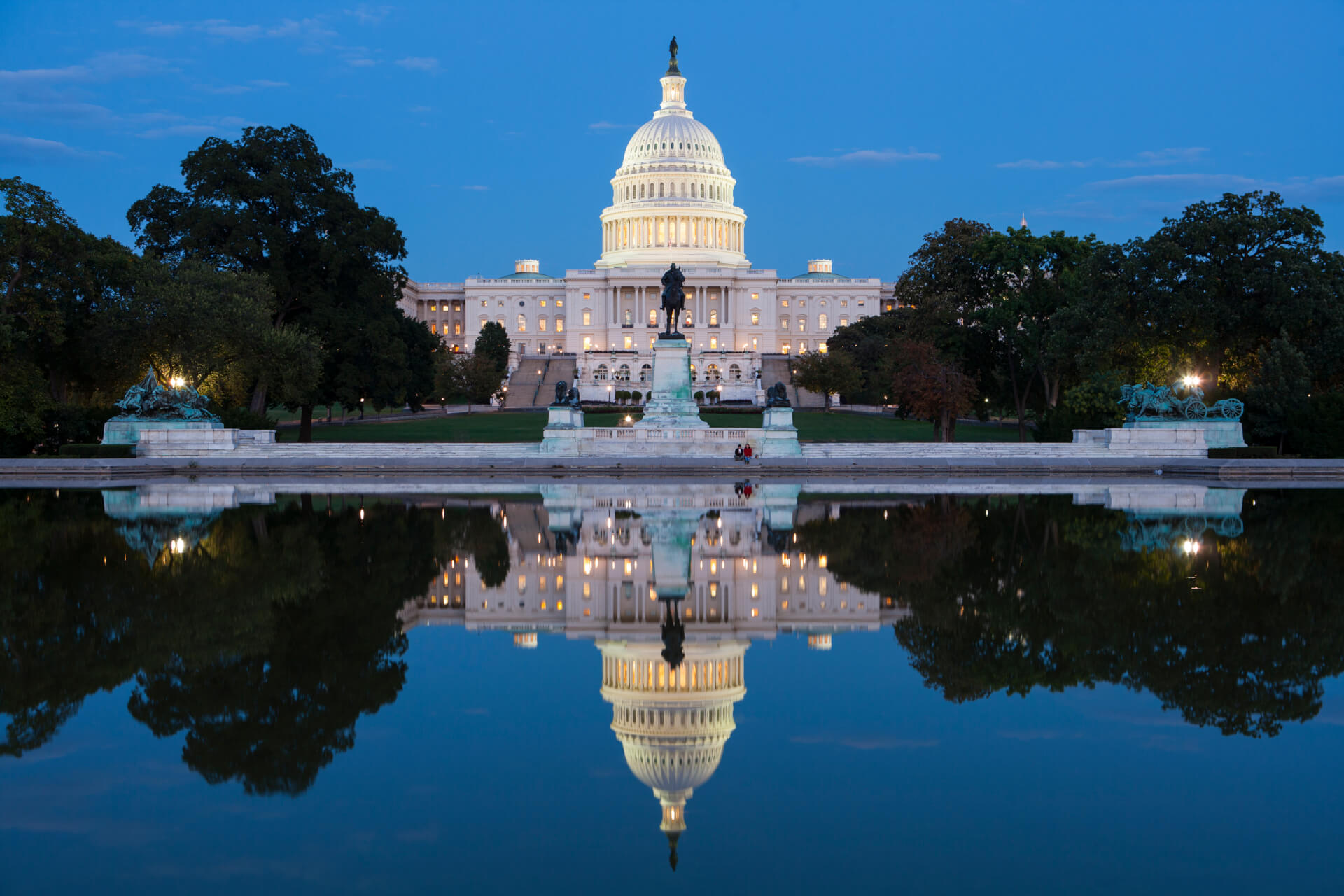U.S. House Passes Three-Week Patch to Keep the Federal Government Operating

The U.S. House passed a bill Tuesday night that would keep the U.S. government up and running through March 11.
The short-term funding bill, the third one of this fiscal year, is designed to give negotiators more time to reach a bipartisan agreement on full-year spending bills — a task they’ve so far been unable to accomplish more than four months past their deadline.
“It’s unfortunate that we’re here again today to pass another continuing resolution,” Minnesota Democrat Betty McCollum said. “I know that the appropriators on both sides of the aisle want to get a full, fiscal year 2022 omnibus done as soon as possible.”
The stopgap bill comes about 10 months after President Joe Biden sent Congress the first budget request of his presidency, proposing lawmakers increase domestic and foreign aid accounts by about 16.5 percent while boosting defense spending by about 1.6 percent.
Republicans quickly rejected those funding levels, saying that ongoing threats from Russia, China and other hostile nations warrant a much higher defense spending level.
The House and Senate Armed Services committees agreed on a bipartisan basis in December to boost defense spending by 5 percent more this fiscal year, but the annual defense policy bill only authorizes the expenditure. It’s up to the Appropriations Committee to actually fund the Defense Department, as well as the vast majority of the federal government.
So far, appropriators haven’t been able to nail down an agreement on how much to increase spending on dozens of federal agencies, including the National Park Service, the Centers for Disease Control and Prevention and Immigration and Customs Enforcement.
In the absence of a full-year agreement, Congress has leaned on temporary funding patches to avoid a government shutdown.
Lawmakers voted in September to begin the new fiscal year under a continuing resolution that lasted through Dec. 3. During that two-month extension, Democrats and Republicans didn’t make any significant progress, opting to use a second-short term spending measure to keep the lights on through Feb. 18.
Negotiations have picked up the pace during the last few weeks, but both political parties say they need more time to decide exactly how much to spend on federal programs this year. That is why the House voted 272-162 Tuesday to send the Senate a third, three-week continuing resolution.
All eight of Maryland’s congressmen supported the measure. About 150,000 Marylanders are employed by the federal government.
New, full-year appropriations bills are also needed to fully implement the bipartisan infrastructure bill Congress approved last year.
“It is essential that we enact an omnibus in order to unlock billions in more federal dollars for infrastructure projects,” Speaker Nancy Pelosi said Tuesday during floor debate. “While they were in the infrastructure bill, the money cannot be spent unless we pass the omnibus.”
Democrats and Republicans are in agreement they’d like this to be the last time they kick the can down the road, in part because these stopgap bills mostly bar federal departments from starting new projects and hold down federal spending to levels last agreed to in December 2020.
“Our military commanders and their civilian bosses badly need our country to escape the hamster wheel of chronic continuing resolutions,” Senate Minority Leader Mitch McConnell said Tuesday. “The urgent task of continuing to modernize and strengthen our military requires predictable budgeting and advance planning.”
The Kentucky Republican said his party would only back a spending deal if it provided parity, or equal percent increases, to the defense and nondefense accounts.
Democrats would need to return longstanding spending policy language to the bills, including several provisions that prevent the federal government from paying for abortions with limited exceptions. And no new spending policy can be added that both political parties haven’t agreed to.
“With these basic things, a bipartisan deal should be achievable. Without them, it will be impossible,” McConnell said.
Senate Majority Leader Chuck Schumer appeared optimistic about leaders reaching agreement, saying negotiators have made “good progress” towards a bipartisan deal.
“I am more confident than ever before that we can reach agreement for an omnibus by March 11th, which is far more preferable to the alternative, a CR for the rest of the year,” Schumer said.
The New York Democrat said the Senate will vote on the short-term government funding bill before the Feb. 18 funding cliff.
Danielle E. Gaines contributed to this report.




 Creative Commons Attribution
Creative Commons Attribution